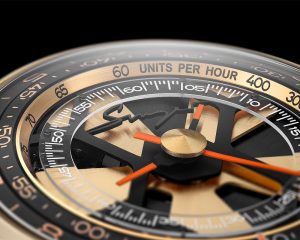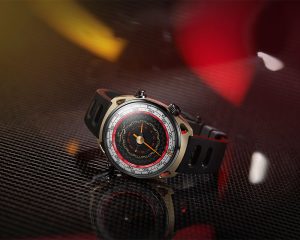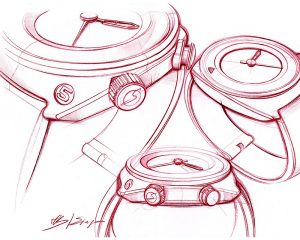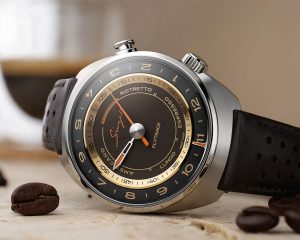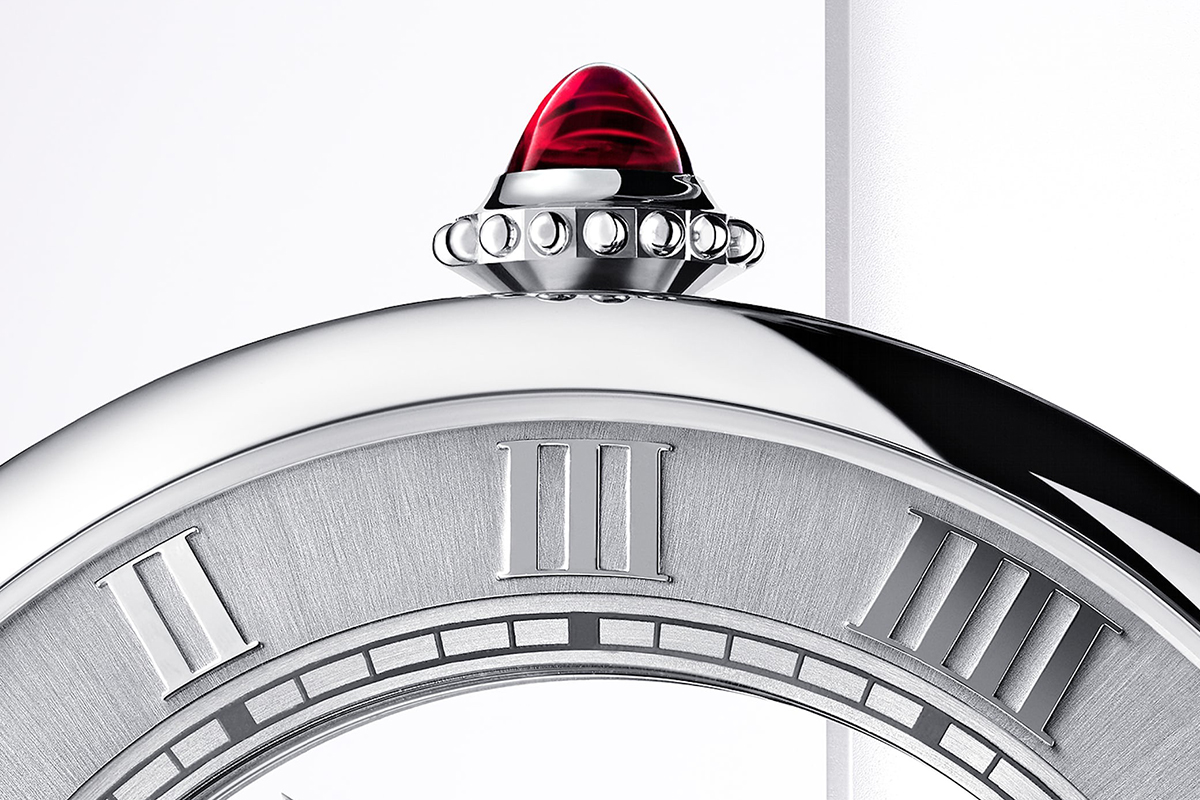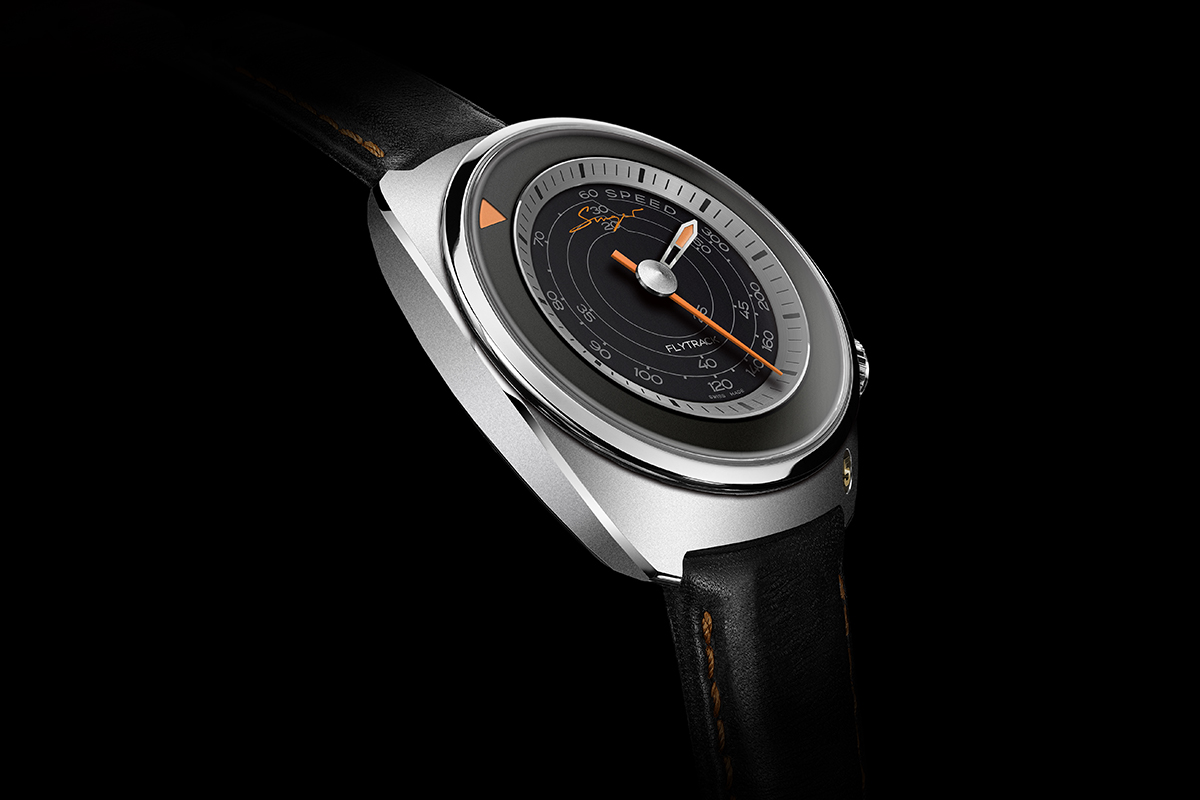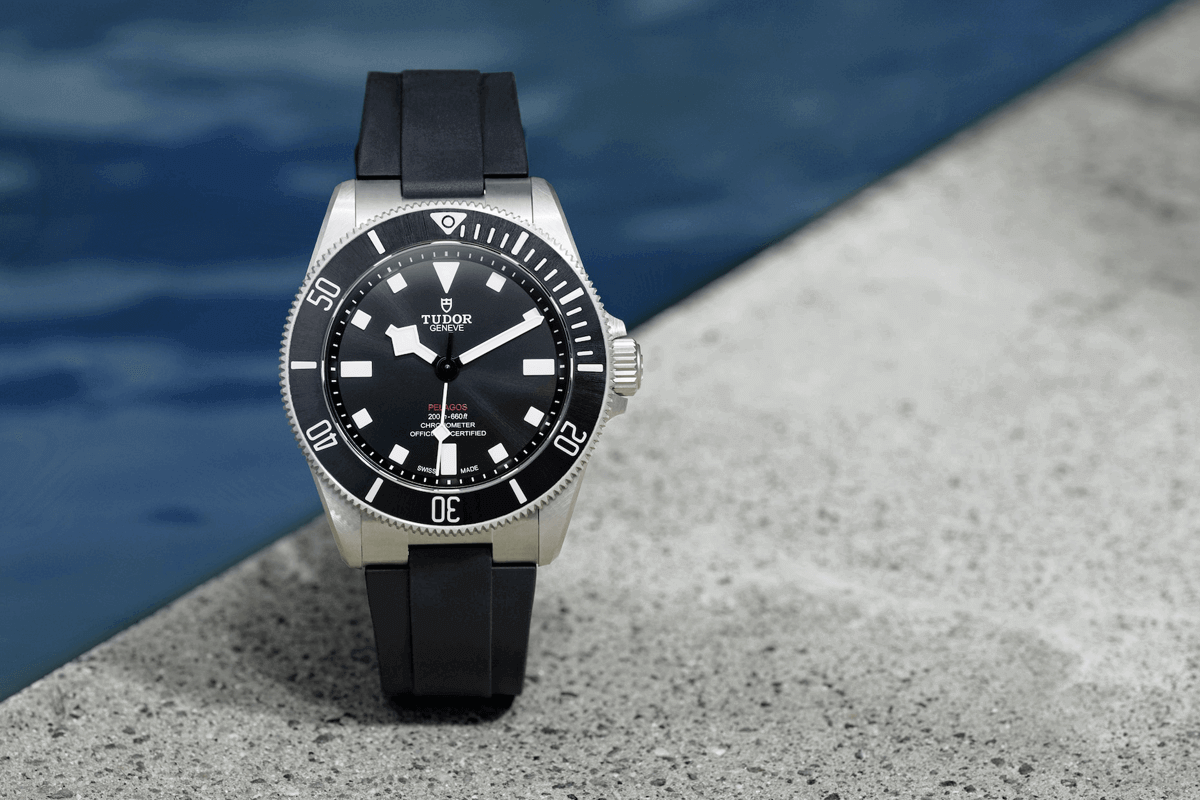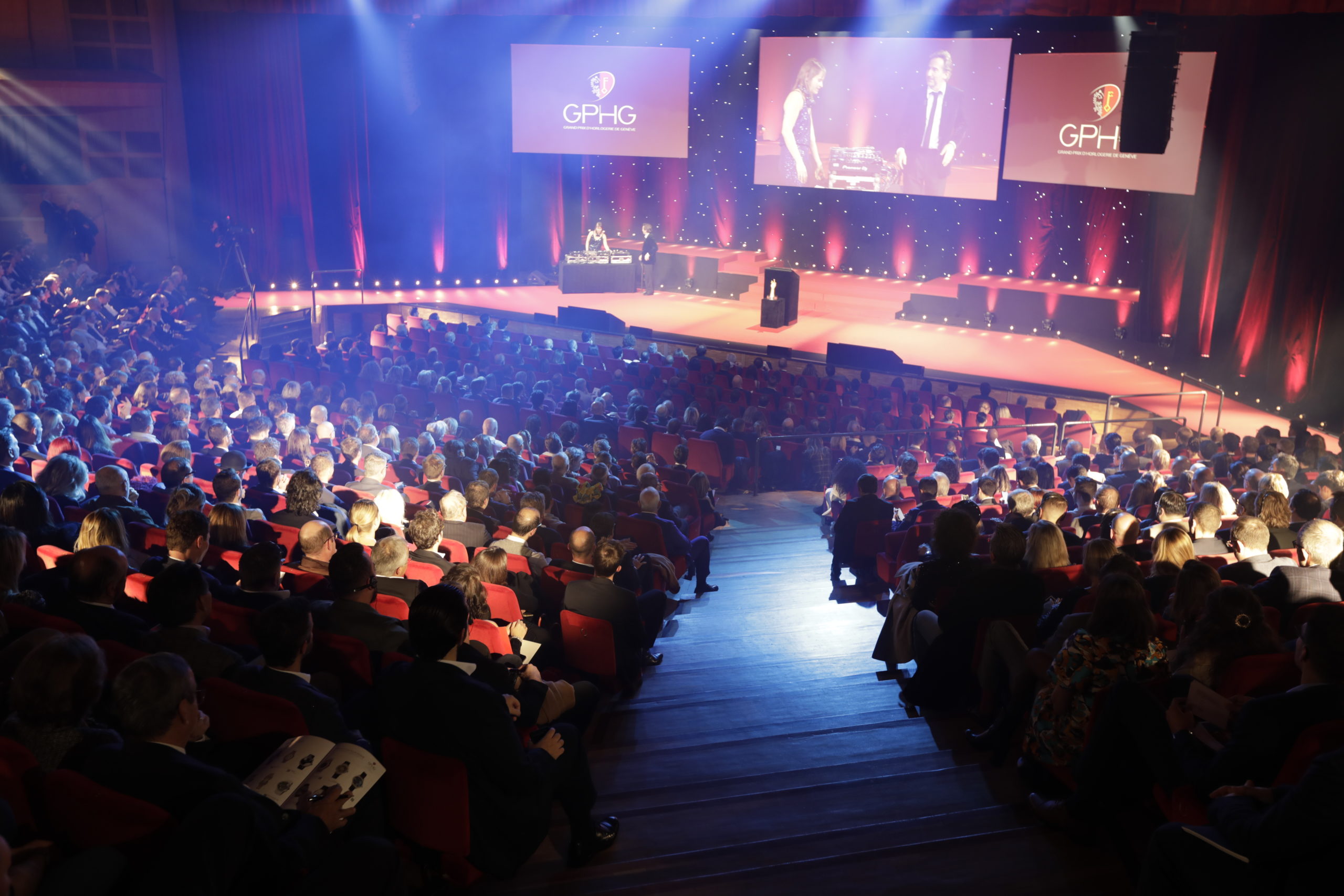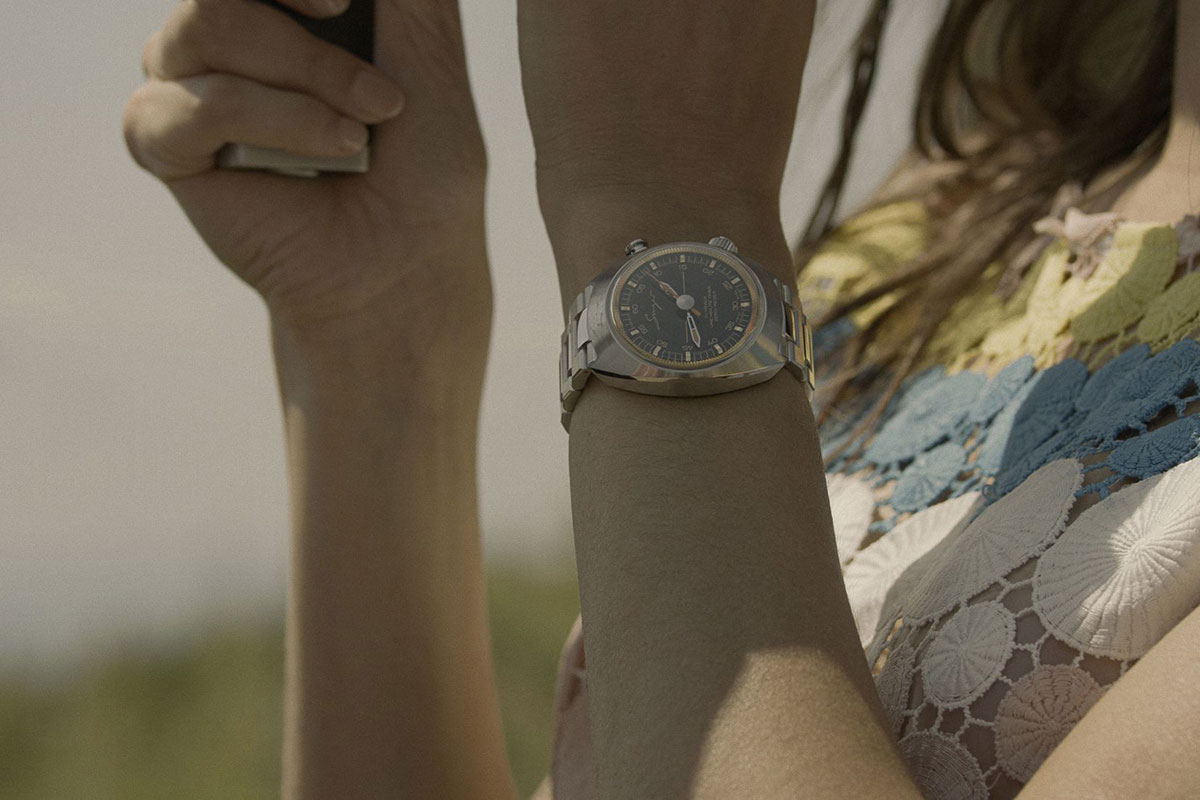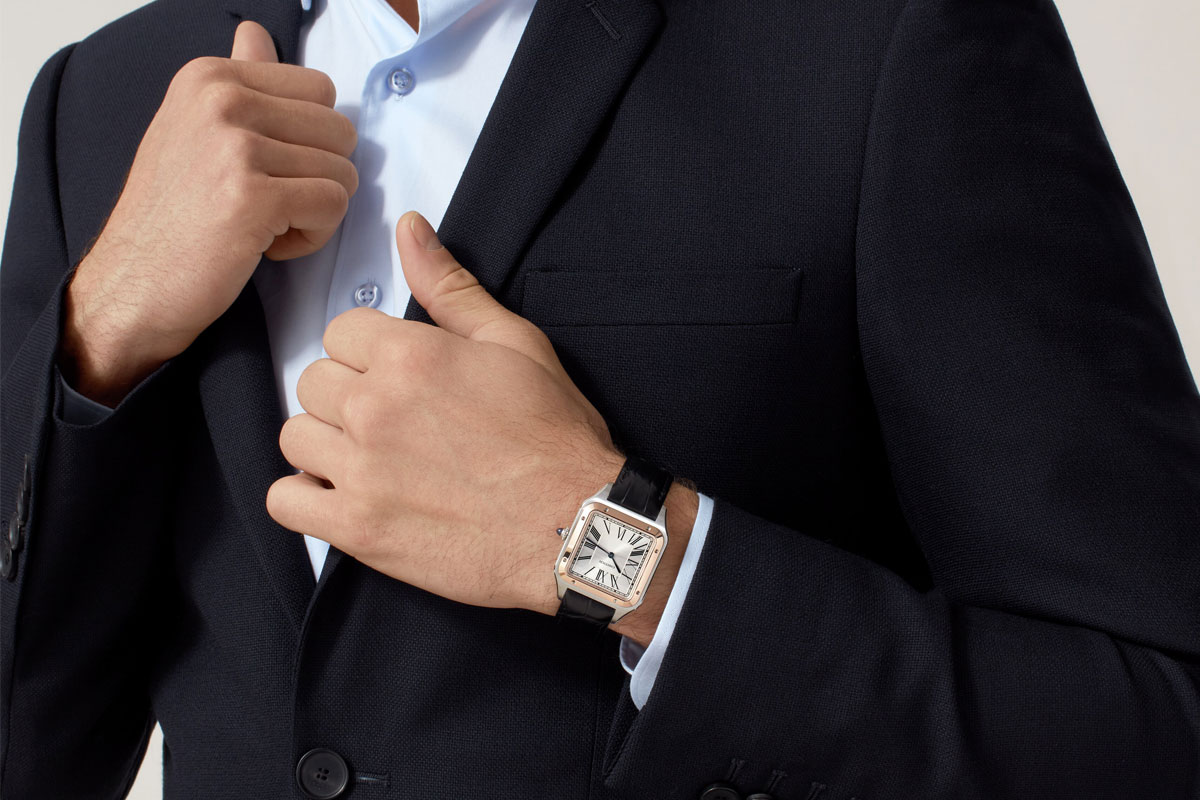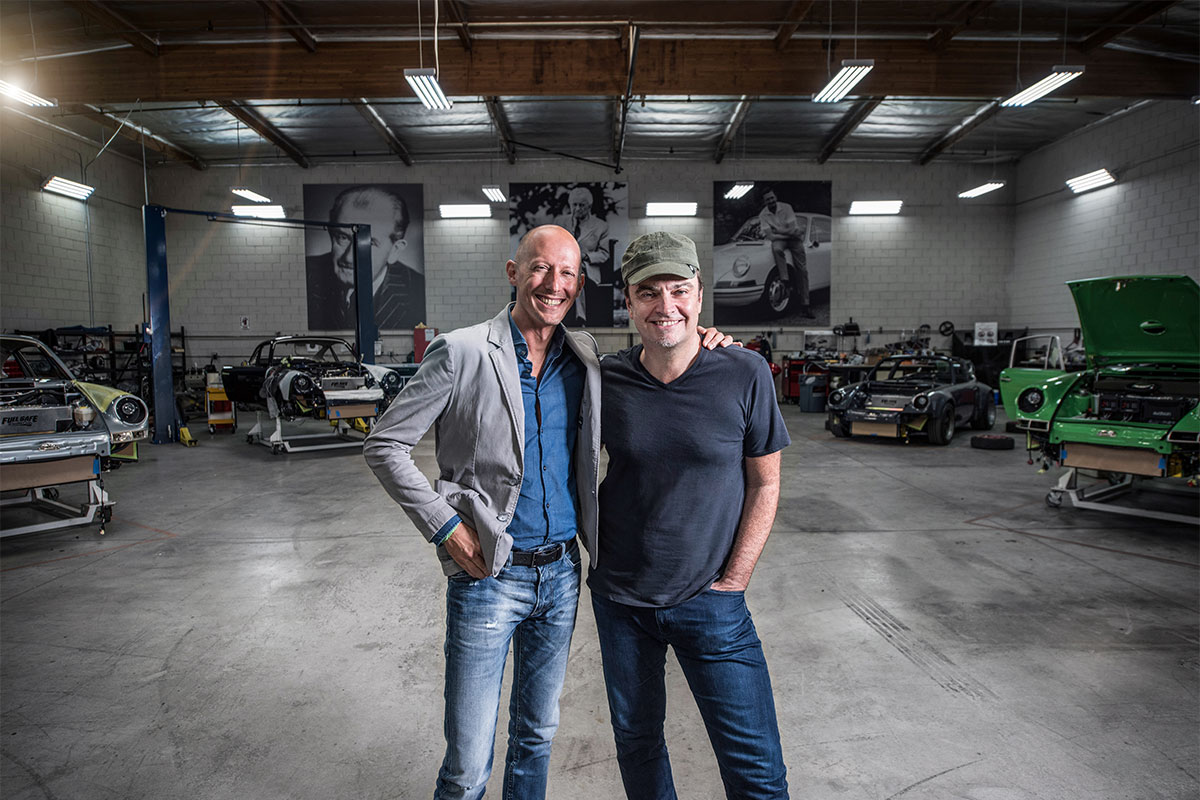
The founder of Singer Reimagined, Marco Borracino, shares how his design philosophy has shaped the brand’s code and continues to evolve today.
Singer Reimagined is an avant-garde watchmaking firm based in Geneva. Founded in 2017 by Italian watch designer Marco Borracino and Rob Dickinson, the company aims to reimagine mechanical watchmaking in the same way Dickinson has reimagined the air-cooled Porsche 911. Borracino has been designing watches since 2000, first for various watch brands and later as the first creative director for Officine Panerai. Eventually, he founded his own design house and met musician/automotive designer Rob Dickinson. This chance encounter would lead to the creation of this high-watchmaking brand and their reimagining of the classic chronograph. Their first watch, the Track 1, won the Best Chronograph award at the Grand Prix d’Horlogerie de Genève in 2018, and Singer’s success has steadily grown since.
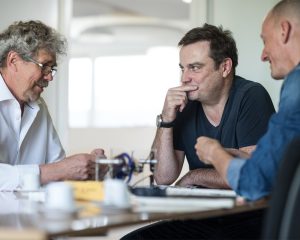
Marco, I know you were a watch designer prior to founding Singer Reimagined with Rob [Dickinson]. Can you tell us more about what you were doing prior to Singer?
I started my career in design consulting after completing my studies in industrial design in Milan. Around the year 2000, one of my clients was setting up a design studio producing timepieces and asked me to join. This gave me the opportunity to dive into watch design and create all kinds of watches with different styles and expressions. Sometime later, the Richemont Group got in touch to invite me to join Panerai as the first creative director of the brand. I was in charge of creating the design department and managed every aspect of the brand from catalogues to watches to visual merchandising. But with a brand like Panerai, the design codes are very clear. So after five years I left to found my own studio in Geneva. That’s when I began to develop the idea behind Singer’s unconventional chronograph design.
Soon after arriving in Geneva, I was contacted by the city’s design university to introduce my design philosophy and develop a contemporary design programme for the school. I realised at the time that there wasn’t any programme for watch design in Switzerland so I proposed that we develop this. We established a scientific committee and invited people from the watch industry to join us and share their expertise as well as their credibility to this programme. One of these committee members was Mr Jean-Marc Wiederrecht, who is an incredible movement designer and the owner of the Agenhor manufacture.
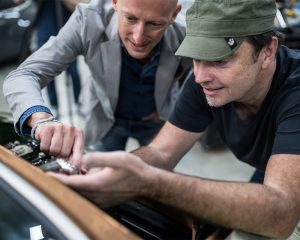
That is how Singer came to work with Agenhor on the Agengraphe movement and also when you met Rob Dickinson of Singer Vehicle Reimagined.
Yes, that’s how we met. At the time, I had already conceptualised a central chronograph watch with disc-based time-telling display when creating a modern table clock for a design competition that was called the Cuckoo 2.0, which had two rotating discs at the base powered by an electro-mechanical movement. I love both modern and vintage chronographs. But 95 per cent of chronograph designs all have the same conventional display which doesn’t offer very good legibility. I started wondering why no one had developed one before.
My entire career has been a series of serendipitous encounters. Each has led me to the next stage of my work. I love vintage automobiles and I got to know Rob through that. We started talking about the affinity between cars and watches and agreed that if Singer would ever make a watch, it would be a chronograph. I then shared my concept and he said, ‘let’s go’. That was around the same time when Jean-Marc [Wiederrecht] asked me what I was working on and I showed him my concept. He was shocked, because it turns out he was also working on a similar central chronograph design, with the time-telling and chronograph functions on the main dial. Even though it is different from the Singer Track 1, we soon realised our alignment on a lot of aspects of the chronograph we wanted to create, and decided to develop this together.
I love the fact that in Singer’s chronographs, the complication is the centre of attention on the watch. Why did you think that was important?
If you have a beautifully crafted and finished movement like the Agengraphe, having it on the exhibition caseback would just hinder the view of movement’s operation. That would be a waste. We wanted to have the look of a manual-winding movement with the performance of an automatic. To achieve that, we had to develop the movement on two levels and instead of having the oscillating weight covering Jean-Marc’s incredible work, we placed it below the dial. So on the skeletonised models of the watches, you can see it spinning. But to me, the oscillating weight is a utility. It’s there for a purpose.
Did you ever consider adding a power reserve indication to the watch?
Yes, but there’s one major constraint: space. Both on the dial and the movement. We considered adding a power reserve module on the back but that would also make the movement thicker. But since this is an automatic movement, indicating the power reserve isn’t the greatest priority in terms of design for us.
The Track 1 and Singer’s chronographs generally have a strong automobile affinity but also elements of vintage chronographs that are refreshed, refined, and modernised.
Exactly. If you are an automobile fan, you will see elements of motor-racing on the watch. If you’re a watch lover, you will see elements of that as well. I love vintage [TAG Heuer] Autavias, Omega Flymasters and there’s a little of the Bullhead as well in the design of the Track 1. If you look at the chronograph of the ’60s and ’70s, you will realise that a lot of them have this turning bezel. This was something that was still relatively new at the time. As such, I translated that turning bezel into part of the dial to become the time-telling feature.
It can seem confusing to some users to have a single track for the chronograph seconds, minutes, and hours. In fact, this is the longest running chronograph in mechanical watchmaking. We’re accustomed to thinking of the conventional chronograph, but this disruption and differentiation is also what we wanted to bring to our watches, to have a different perspective of the chronograph design. The design language of our watches are really very much in line with what we would do in California for automobiles.
How did you refine the design of the watch for today’s watch collectors?
The thing about many of the vintage chronographs I love is that when you look at them from the front, they are stunning timepieces. But when you put them on, you realise they are quite chunky with a flat profile, which can be uncomfortable to wear. That is why I chose to design the watch with a barrel-shaped case, even though it may not be the most popular case design. It offers the shortest distance between lugs, so even though our watches are not small, they wear very well. The case is also curved along the length of the watch and covered with a domed sapphire crystal to create this hemispherical form. We also wanted to ensure that the watch wasn’t too thick and that was a technical challenge for Jean-Marc [Wiederrecht] – to create an automatic chronograph that would also be quite slim.
What are the challenges in trying to simplify the design of the chronograph?
I knew the chronograph would be the central element of the watch. But what is difficult is to find the balance between elements. You need to bring enough of something to balance what’s positioned on another part of the dial. You need to continuously experiment to find that right balance and this is an evolving project. We’re also trying to improve it further because there’s always something that can be done differently or better. It is a work in progress. But now that we’ve developed a code and design language that is firmly established, we’re going a little further.
On the latest Track 1 dedicated to the 24 Hours of Le Mans race, we’ve improved the function of the chronograph with a 24-hour totaliser instead of the 60 hours, with a clear distinction for the time-telling on white ceramic discs. These discs are actually aluminium that’s modified to create an alumina oxide layer which forms the white ceramic and getting the right colour was a very exhaustive process. Furthermore, another comment we receive is that they are confused by all the numerals moving around the dial. As such, we spent the last five years trying to find a design that would please myself and our users. This summer, we will be launching a new watch which has the same design codes as the original Track 1, but in a different style.
What is interesting is how you constantly try to develop new ideas for reading and using the chronograph, like the Flytrack Barista.
When we designed the Track 1, we didn’t do any market research about the watch. It was really something that Rob and I wanted to create for ourselves. We developed the longest running chronograph with a 60-hour totaliser, when the reality is that you tend to use a chronograph for very short time measurements. The idea for the Flytrack stemmed mainly from usability and when we shared this idea with Agenhor they were excited about it. It took us a couple of years to come up with a solution that is very satisfying and you don’t stop playing with it. We chose coffee-making because it’s a daily activity that is quite universal. The difficult thing is to find a good idea and have the right way of developing it graphically. In addition, the one-minute limit on the Flytrack makes things slightly trickier, but we will have some new expressions for later this year.
What are the brand’s plans for Southeast Asia, and how will you be working with Cortina Watch to bring this vision to life?
They have been very excited about this collaboration and I think we have a terrific opportunity in this region which we have not really explored at all. In the next few months, we will be spending some time in Singapore to expand on the Singer Reimagined brand and products seeing as our watches are distinct in the industry. By the end of this year, we will be retailing Singer Reimagined with Cortina Watch in Singapore, Malaysia, and Thailand.
Southeast Asia is a vast market with a large community of knowledgeable collectors who appreciate independent and fine watchmaking. It is very exciting to be able to connect with and engage these collectors, to share our ideas and vision with them. Cortina Watch is one of the most important high-end watch retailers in the region and their team are incredibly experienced and familiar with what the market is interested in. They have a strong passion for fine watchmaking, which is why we’re partnering with them.
What we do at Singer Reimagined is to breathe new life into iconic watchmaking with modern engineering and materials science, which is similar to what Cortina Watch is doing with their modern retail network across Southeast and East Asia. We’re incredibly thrilled to be coming to share more about our latest creations with the region’s watch aficionados.
Discover more watches with Cortina Watch online or contact us to make an appointment for a visit at our boutiques to speak to a sales associate.
